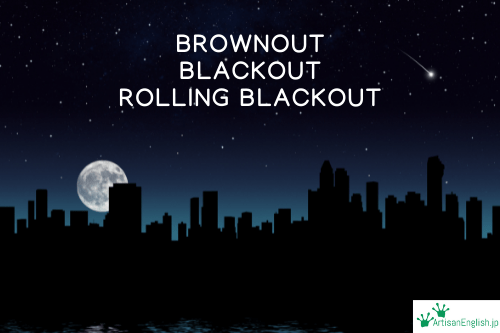
YouTube / iTunes / Spotify / Radio Public / Pocket Casts / Google Podcasts / Breaker / Overcast
Listen to ArtisanEnglish.jp posts & lesson intros here.
WotD: Brownout
It’s time I explained the difference between brownout, blackout and rolling blackout due to the strain climate change is placing on our electricity grids.
First, a brownout occurs when an electricity supplier intentionally reduces the voltage of the system.
You can tell this is happening because the old-style incandescent lightbulbs will dim or become less bright, not the fluorescent ones.
Periods of extreme usage, such as heatwaves or cold snaps, may cause a brownout to occur.
Providers will do this because they are unable to supply enough power at a higher voltage.
It’s a way for them to manage the system and maintain a supply of electricity without causing a blackout.
Next, we’ll look at a blackout.
Blackouts are often caused by system failures and occur without prior warning.
At the beginning of this year, the State of Texas experienced a blackout that lasted for more than three days before service could be restored.
As a child growing up in Canada, we often experienced blackouts during the winter.
In April 1984, a sleet storm (freezing rain) felled many powerlines and poles.
We had no electricity for two weeks, and my father was unable to work.
Finally, we’ll discuss rolling blackouts.
There are times when electricity suppliers are unable to provide enough electricity to all of their customers.
During these periods, the provider may decide to have what’s called a rolling blackout.
Full service will be provided to different areas for a limited time, while other regions will experience an intentional blackout.
People will often rush to complete any tasks that require electricity, such as cooking, washing or bathing while they have electricity.
Flesch-Kincaid Readability Test
This post is understandable by someone with at least a 9th-grade education (age 15).
On the Flesch-Kincaid reading-ease test, this post scores 58.
The easier a passage is to read, the higher the score on a scale of 0 – 100.

